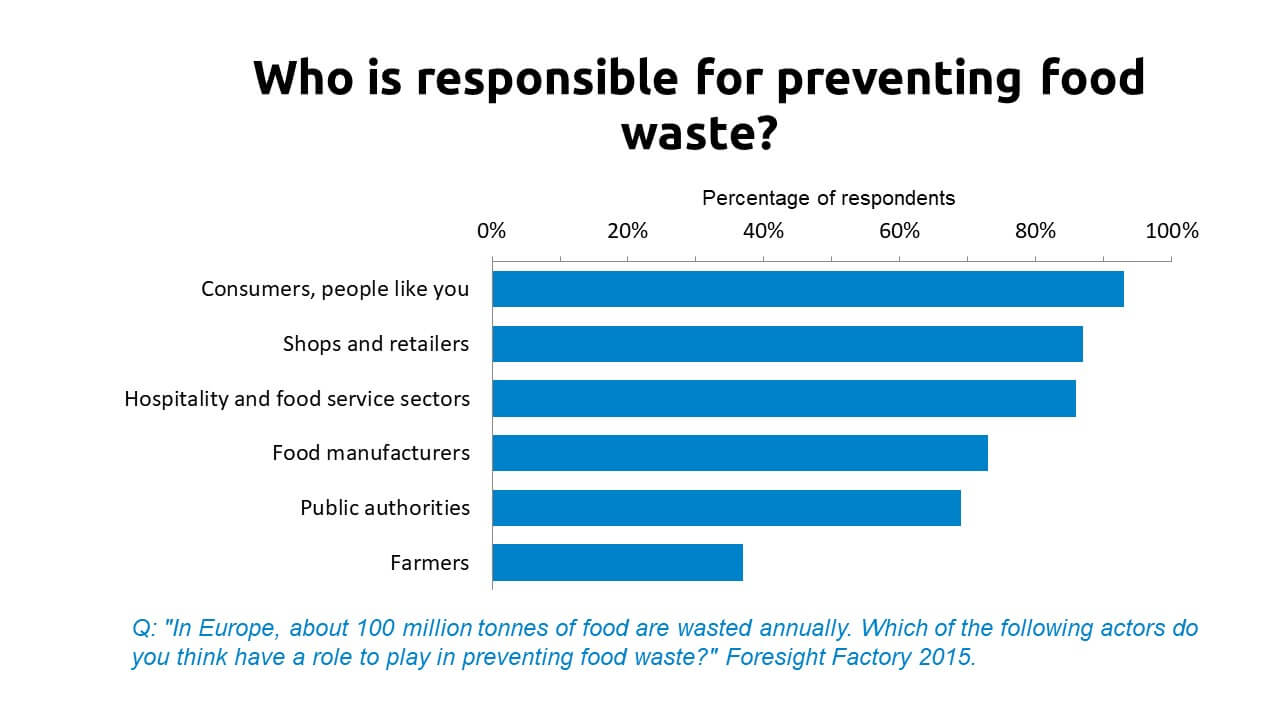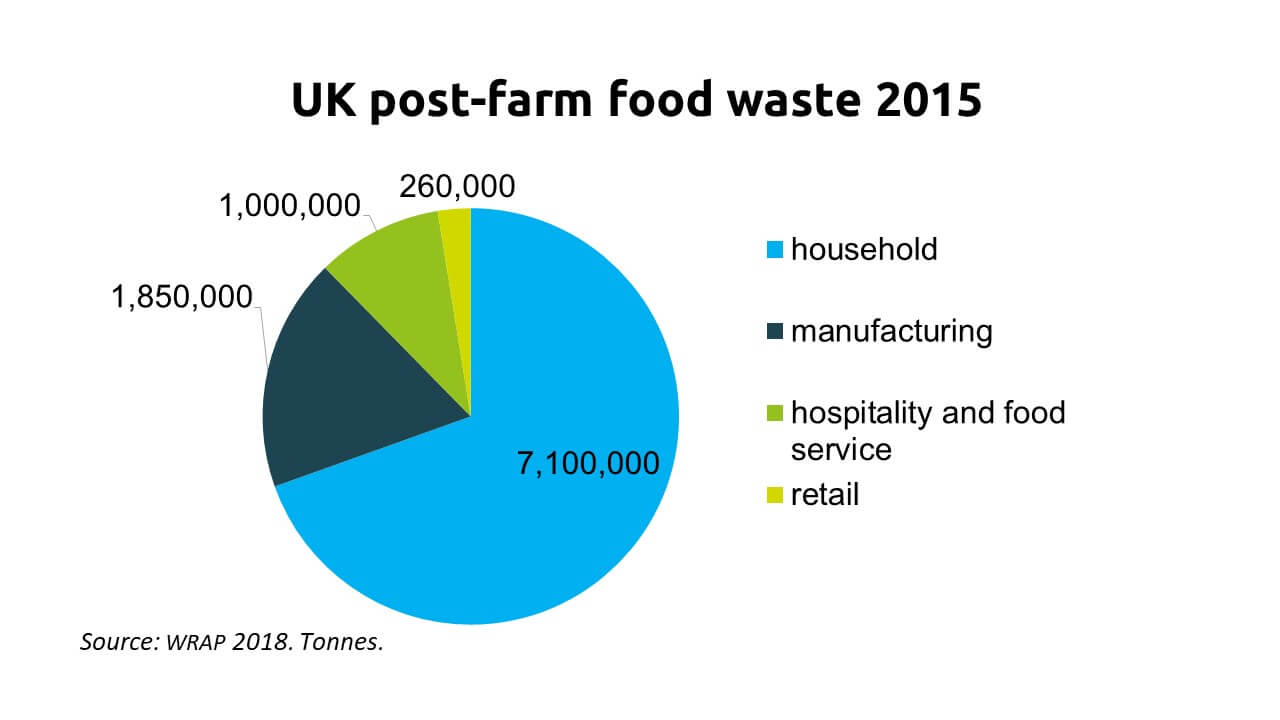Are you watching your waste?
Tuesday, 11 December 2018
Around a third of the food produced in the world is wasted, with a carbon footprint bigger than most countries. Wasted food represents a huge waste of resources, from the land and water taken to grow the food, to the energy used to process, transport and prepare it.
In the UK, our distaste for waste is on the rise. 4 in 5 consumers agree that “People are generally far too wasteful when it comes to food” (Foresight Factory). This feeling is especially pronounced among older generations (94% of 65–74-year-olds agree) and 7 in 10 agree that food waste is harmful for the environment (WRAP). We’re most likely to think that the responsibility for preventing food waste lies with consumers like ourselves, while less than 40% think the responsibility lies with the farmers at the other end of the food supply chain.
Although we are concerned about other people wasting food, our own intentions to reduce food waste are often weaker. Foresight Factory’s research showed that only 33% of consumers are consciously planning to waste less food in the next six months. This is the lowest agreement in the last 10 years, with intentions not to waste food highest during and after the global financial crisis (60%). After all, wasted food is wasted money.

Post-farm food waste in the UK totals around 10 million tonnes a year, over 70% of which is wasted in the household, according to WRAP’s estimates. This equates to an average of £540 per household per year lost on avoidable food waste, rising to £810 for households with children. The top foods thrown away are perishable categories such as fruit and veg, bread and milk.
Many of us think we don’t waste much food but evidence suggests we are probably unaware of how much food we’re throwing away. WRAP has found that even households who say they waste no food actually produce an average of 2.9 kg food waste a week, 1.7 kg of which is avoidable. Interestingly, they also found that there is no real relationship between the amount of food wasted and the age of household respondents. Households where the main shopper is aged 65+ throw away an average of 1.2 kg per person per week, the same as in households where the main shopper is aged 16 to 24.

Why food is wasted in the home
The most commonly cited reason for throwing away food is that it isn’t used in time and has gone off or passed the date on the packaging. While use by dates are mandatory on products that could carry a safety risk if eaten out of date, best before is a quality indication to show that produce is past its best but still safe to eat. Retailers have taken action in response to customers’ confusion about these dates. For instance, Tesco has announced it will be removing all date labelling from own brand apples, potatoes, tomatoes, lemons and onions to reduce the amount of edible food thrown away in the home.
Another major reason people throw food away is that the food is no longer wanted or that too much had been prepared. In 2015, 75% of people surveyed by Foresight Factory said that having smaller portion sizes available in shops would help them to waste less food in the home, rising to 80% among single occupier households. Increasing numbers of us are living alone and, in recent years, retailers have increased the diversity of pack sizes on shelves in categories such as bagged salads, pre-packed apples, carrots and potatoes.
Rethinking the way we sell food
While retailers have an important part to play in helping consumers waste less food, some food is wasted before being sold. Retailers and suppliers are now working with charities such as FareShare to redistribute surplus food to homeless shelters, food banks and other organisations around the country that feed people in need. Between 2015 and 2017, the amount of food redistributed by retailers doubled to nearly 12,000 tonnes.
Since 2015, retailers have also been experimenting with selling ‘wonky veg’ – produce that doesn’t meet primary specifications but is still safe to eat and is sold at a discount to class 1 produce. Previously, this food may have been rejected by retailers and sold to a secondary market such as animal feed or processing.
Retailers have reported success with this approach and have rolled out a number of wonky lines across fresh produce. Morrisons have reported sales of 500 tonnes of wonky veg a week across 50 seasonal lines and, according to Kantar, 12% of Morrisons customers now buy from the wonky range, helping to boost own-label sales by 18%. Aldi, Lidl, Tesco, the Co-op, Waitrose and Asda all now stock imperfect lines.
Cutting down on wasted food requires collaboration and in September of this year, participants across the supply chain committed to the Food Waste Reduction Roadmap launched by WRAP and IGD. Households contribute the most to total food waste so reducing waste in the home has the greatest potential for impact. WRAP’s research suggests that gains can be made simply by getting people to use up their leftovers, plan their meals and have a look in their fridge before they go shopping. Sometimes, it’s the little things that count.


